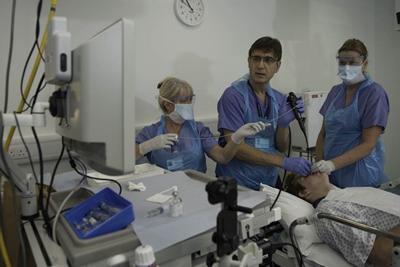A key part of NAMRIP philosophy is that in designing solutions to the problems raised by AntiMicrobial Resistance and Infection Prevention, we bear in mind the end user. For example, it is no good designing a device intended for common usage unless we make it:
- easily usable without training; and
- acceptable to the society in question; and
- with a sufficient Intellectual Property Protection (e.g. patenting) so that a company can make thousands of units and sell for a price that is acceptable to the end user, bearing in mind that they will not proceed with manufacturing unless they can recoup the development costs they put in.
If we want to change policy, or the behaviour of public or professionals, we have to be aware of, and plan to accommodate:
- the constraints in which changes can be made; and
- the acceptability of solutions; and
- the practicality of implementing them.

For example, although people should wash their hands in warm soapy water for 20 seconds in warm soapy water, in the UK the average is 6 seconds, often in cold water without soap. If years of advertising have not changed behaviour, then we must change the water, and in NAMRIP we have an invention that aspires to give the public adequate cleaning in 6 seconds of cold water washing without soap. Incorporation of this into standard taps would be the quickest route for uptake by the public, as it would require no change in their behaviour. However in healthcare, we need to raise awareness of how easily microbes can spread even when healthcare worker conduct current protocols, and in NAMRIP we are producing educational tools to illustrate how easily microbes spread.

However for a surgeon their hands are key to their careers, and so they might be particularly wary of any changes, so that any new technology for hand washing in surgeons needs to take into account attitudes that do not apply to innovations in public hand washing. Similarly, in NAMRIP we are researching materials (including metals) to which microbes will not adhere, and we might alter catheters without the need for healthcare workers to learn new practices, but surgeons will not readily abandon surgical steel (a material which many microbes find conducive to colonization) because of a wealth of other advantages it gives them.

At NAMRIP we take time to understand the problems from the viewpoint of the end user, whether it refers to the prescribing of antibiotics or the fitting of catheters by healthcare workers, or the treatment of livestock by farmers. NAMRIP values the time need to understand how environmental factors, socio-economic factors and behaviours contribute to disease transmission in resource poor settings, particularly related to diseases which transmit from livestock to humans. We also understand the ethical and legal challenges to implementing changing in policy or the adoption of new technology or practices.
NAMRIP Lead Researcher: Professor Tim Leighton